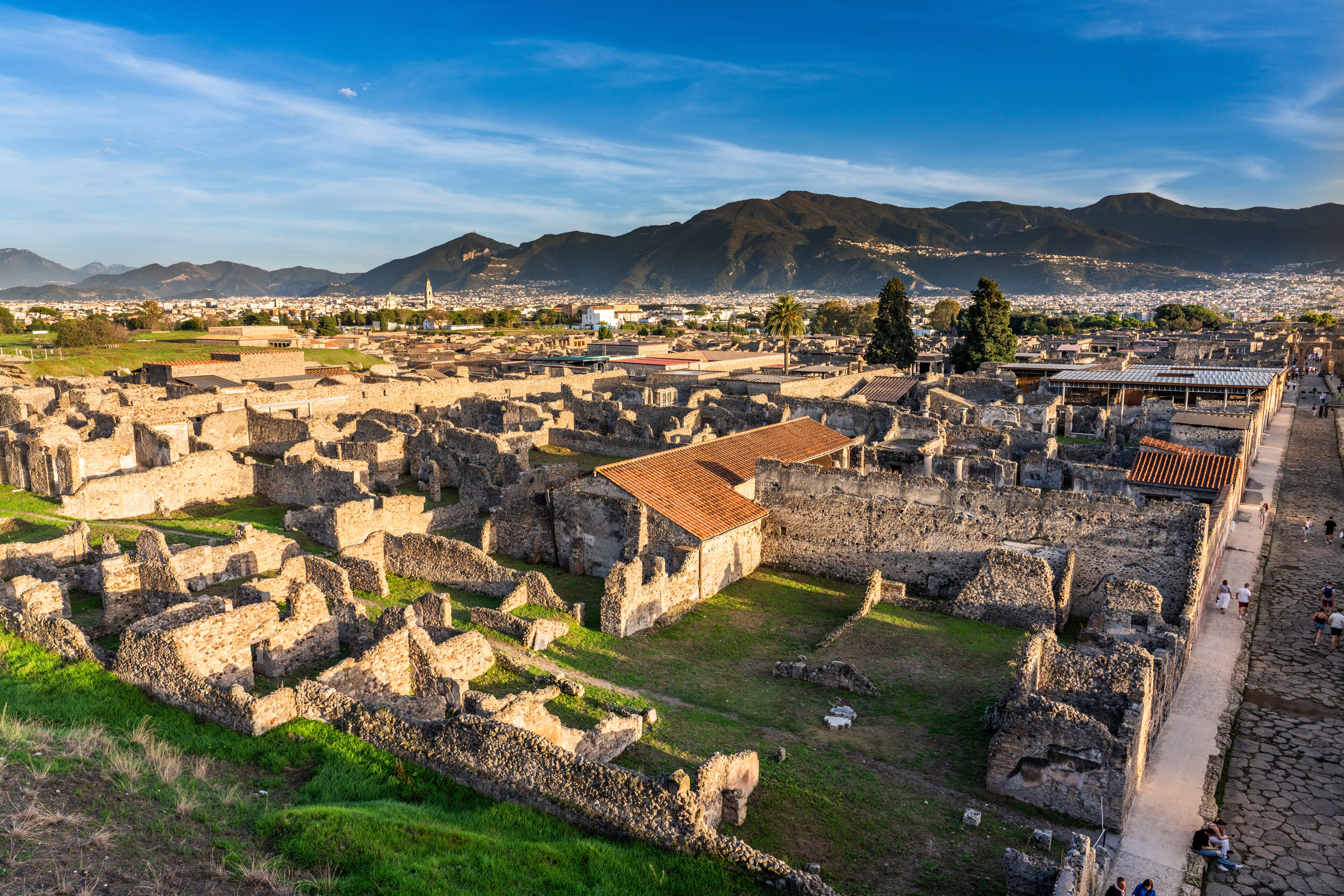Key Sites in Region VI

-
Villa of Diomede
The Villa of Diomede, spanning three levels, features gardens and pools with views towards the ancient coastline. It covers 3500 square meters and includes important rooms like the triclinium. The garden, with its pool and summer dining area, is a highlight. Two victims were found near the service area door, one holding a gold ring and silver key with 1356 sesterces.
The villa was excavated between 1771 and 1774. It was popular in the 19th century and appears in the novel "Marcella" by Théophile Gautier. It is named after Marcus Arrius Diomedes, whose tomb is nearby.
-
House of the Vettii
The House of the Vettii is one of the richest homes in Pompeii. It is under the protection of Priapus, symbolizing prosperity. Owned by the wealthy brothers Aulus Vettius Restitutus and Aulus Vettius Conviva, this property features a large garden.
The garden is adorned with statues and water jets. Rooms around the peristylium are richly decorated, including a frieze of Cupids. Excavated in 1894-1895, this site also includes a lararium painting in the kitchen. Graffiti indicates a room used by a prostitute.
-
House of Apollo
The House of Apollo expanded to include a large garden on two levels. It's known for its summer triclinium and marble fountain. The house features mythological mosaics, including one of Ulysses and Achilles, with other artworks in the National Archaeological Museum of Naples.
Named for scenes related to Apollo, it likely belonged to Aulus Here(n)uleius Communis, evidenced by a seal ring. Excavated from 1830-1839 and in 2004.
-
House of the Faun
The House of the Faun is one of Pompeii's largest homes, covering an entire block. Dating back to the 2nd century BC, it features a grand entrance and a statue of a dancing satyr or Faun. The house includes two atriums and two peristylia with various rooms.
A famous mosaic of Alexander the Great and Darius is located here. Excavated in 1829-1833, 1900, and 1960-1962, the original mosaics and statues are in the National Archaeological Museum of Naples.
-
House of the Tragic Poet
The House of the Tragic Poet is known for its "Beware of the Dog" mosaic at the entrance. It has an atrium and tablinum with fine mosaics, including a scene of actors preparing for a play. The house also features mythological paintings, a lararium, and a mosaic of Ariadne and Theseus. Excavated in 1824-1825, it inspired parts of the novel "The Last Days of Pompeii" by Edward Bulwer-Lytton.
-
House of the Golden Cupids
The House of the Golden Cupids is an elegant home from the Imperial era. It features a peristylium with higher columns on one side, creating a sacred atmosphere. The house includes a hall with mythological paintings, a mosaic floor, and two worship areas dedicated to traditional and Egyptian gods.
The garden has reliefs and sculptures. Excavated in 1903-1905, the name comes from Cupids on gold medallions in the portico.
-
House of the Ara Maxima
The House of the Ara Maxima centers around an atrium with no garden. It features a small room with a painting of Narcissus and a lararium with the family Genius and auspicious snakes. A rare table with a bronze Egyptian sphinx was found here. Named after a fresco of Hercules, it was excavated in 1903.
-
Castellum Aquae
The Castellum Aquae is a water distributor at Pompeii's highest point. Connected to the Augustan aqueduct of Serino, it supplied the entire city. The structure includes a large circular basin and a gate system for water distribution.
Damaged by an earthquake in 62 AD, it was not in use during the 79 AD eruption. Excavated in 1902.
-
House of the Oven
Dating back to the 2nd century BC, this house became a bakery after the 62 AD earthquake. Ground floor rooms were transformed for production, while owners likely lived upstairs.
Over 30 bakeries existed in Pompeii, showing the bakery business was profitable. Renovations included a large oven and four lava millstones in the peristylium. A donkey skeleton was found nearby. Excavated in 1809-1810.
-
House of Adonis Wounded
This house was part of a bigger property from the mid-2nd century BC. It was fixed up later, with most walls repainted. There's a fresco of Adonis dying and Aphrodite in the garden. Adonis was loved by Aphrodite but was killed by a boar in Greek myths.
Another painting shows the "Toilet of Hermaphrodite," representing love that couldn't happen. Excavated in 1835-1838.